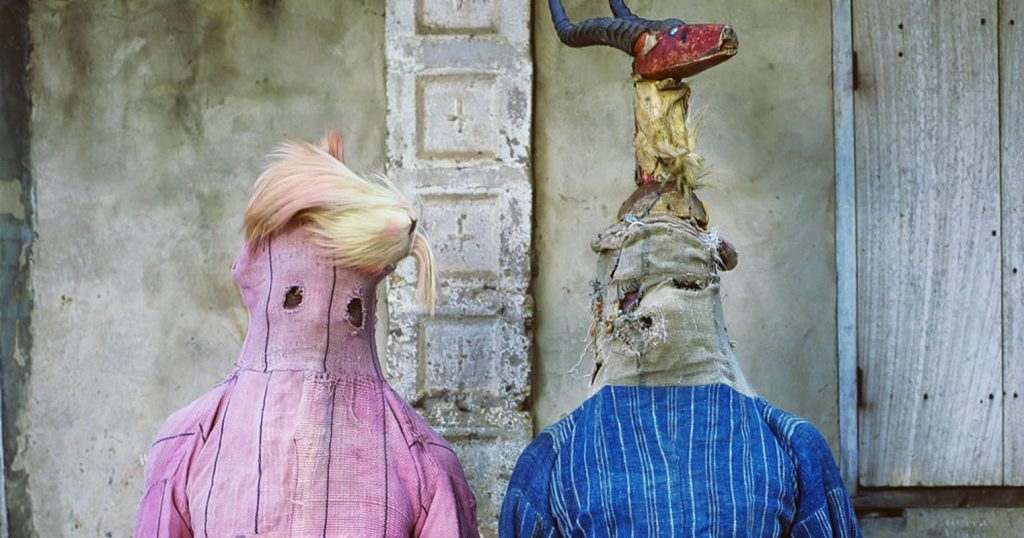

Art in America praised Phyllis Galembo’s combination of a “careful, almost ethnographic observation with a deep sense of mystical wonder” and The New York Times noted the “dignity, conviction, and formal power” in her work. The elaborate costumes created for weddings and burials, initiations, chiefs’ coronations, and holidays are often made of inexpensive materials such as raffia, carved wood, coarse fabrics, crocheted yarns, flowers, grasses, leaves, and sticks. The outfits run a gamut of dramatic designs and shapes, from striped-knit bodysuits to appliquéd fabric costumes as voluminous as tents. They might represent male or female entities, animals like elk and jaguar, or various spirits. As art writer Anne Doran pointed out, “Galembo’s primary interest is the wearer’s belief in the power of ritual costume to alter their everyday reality.”